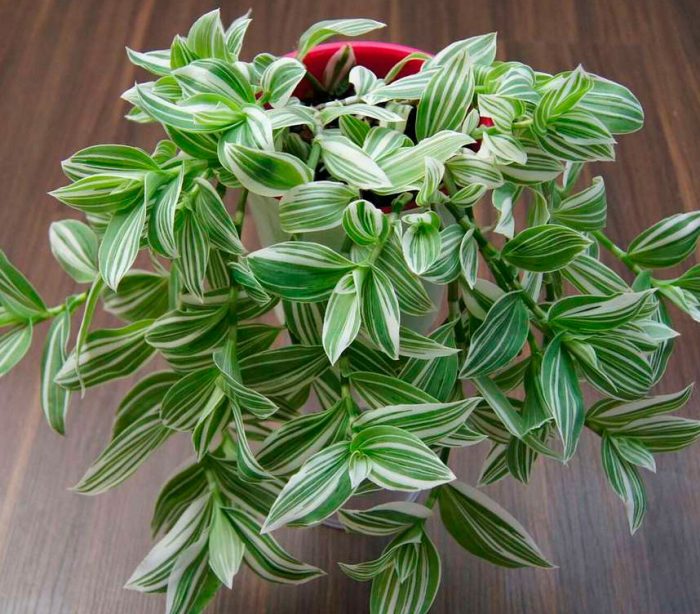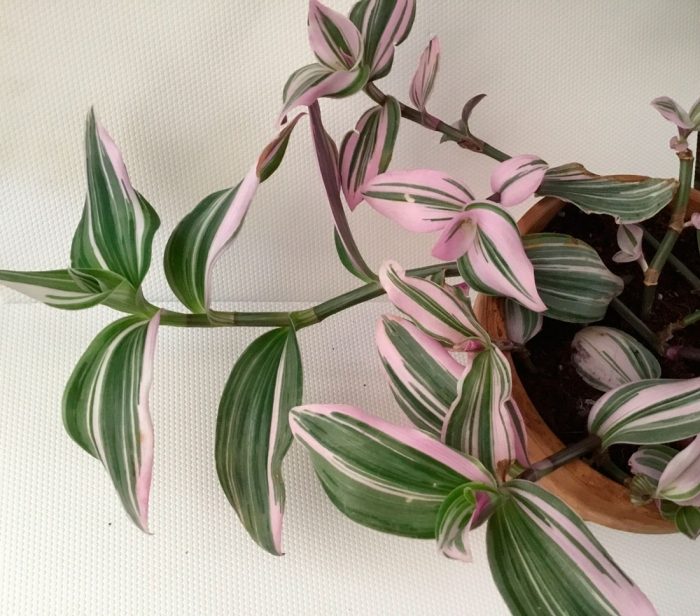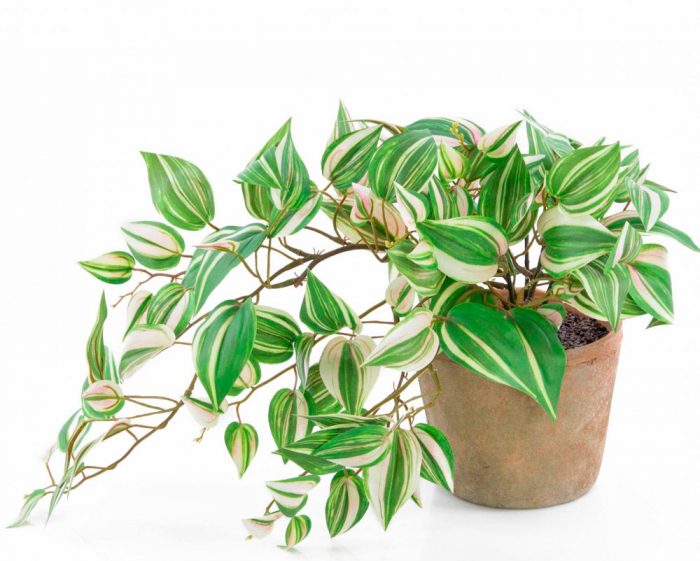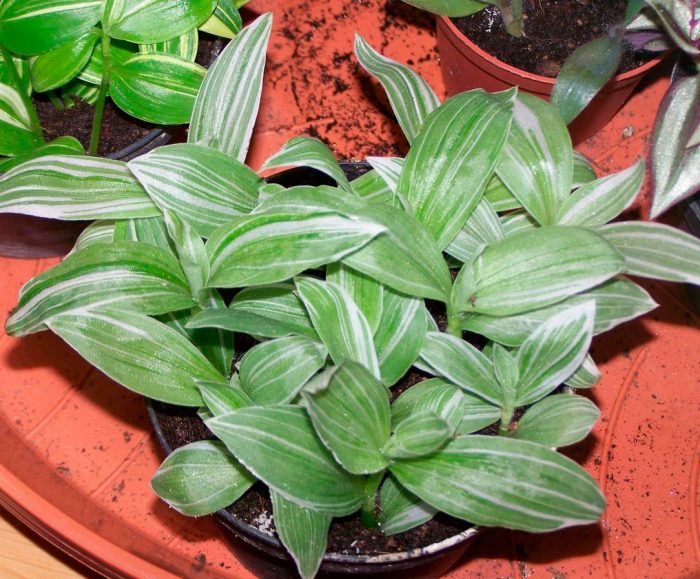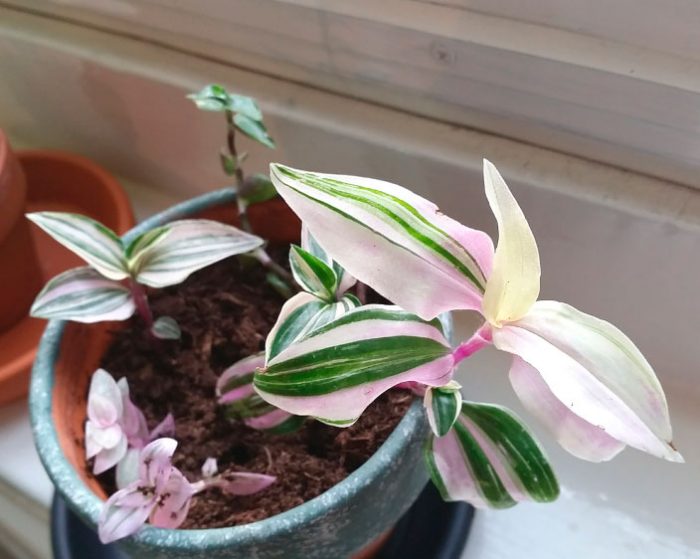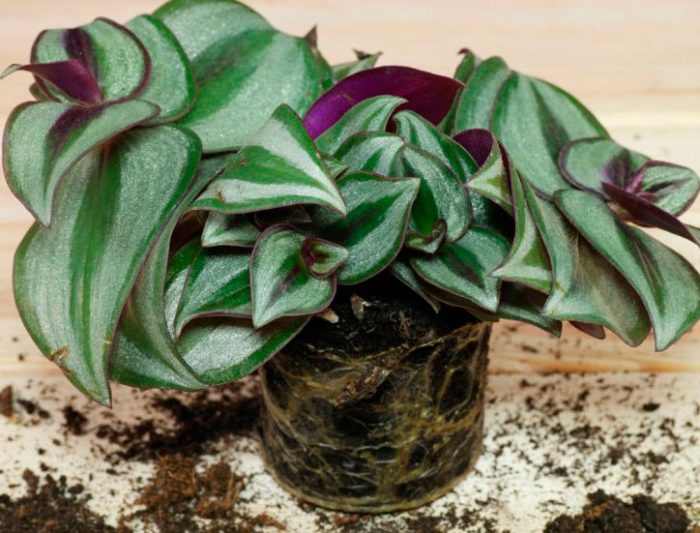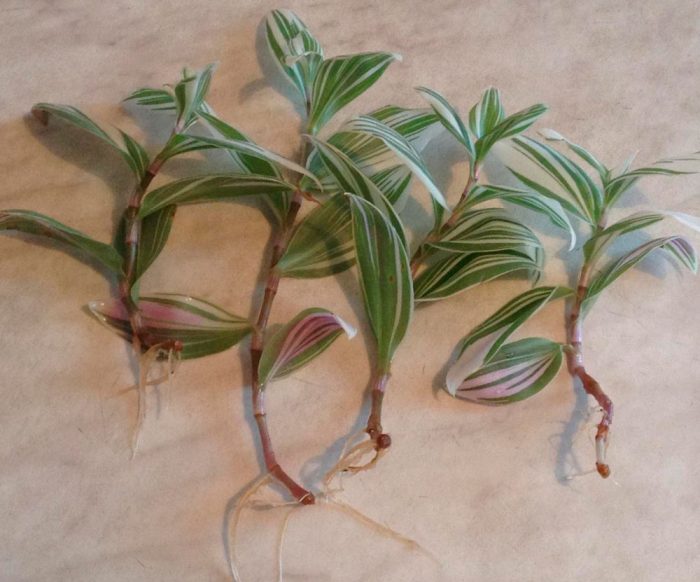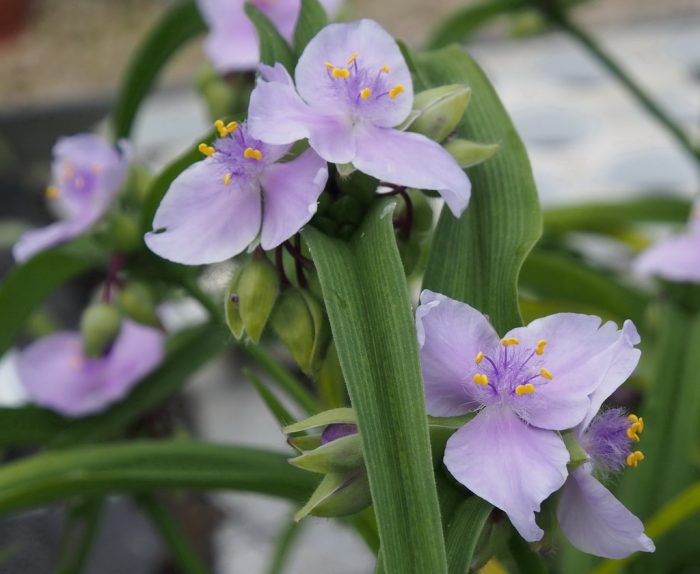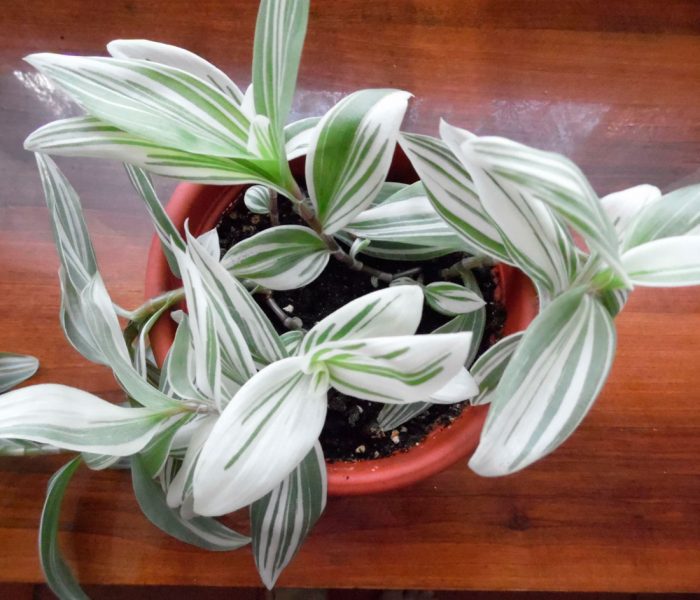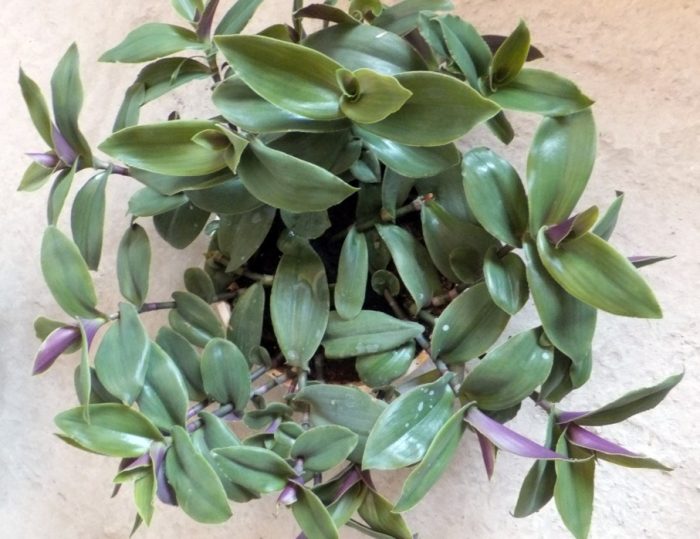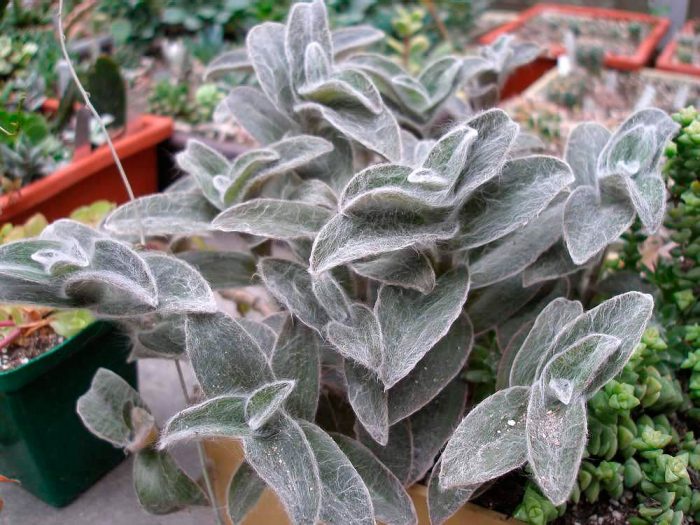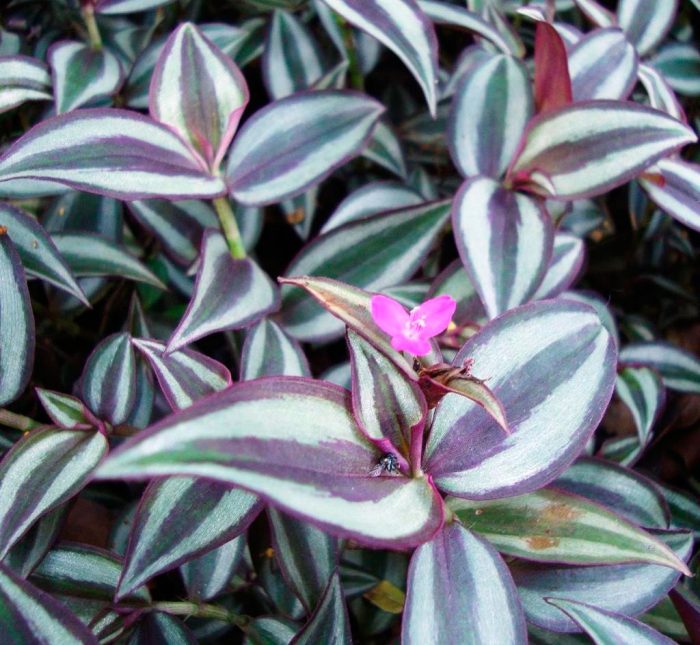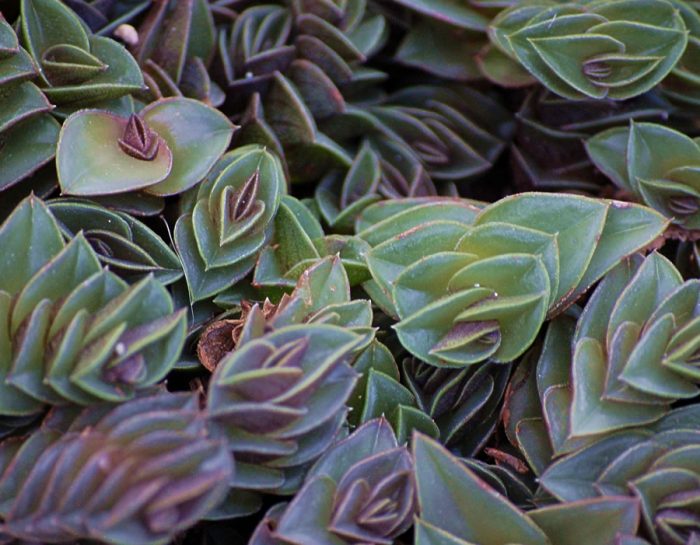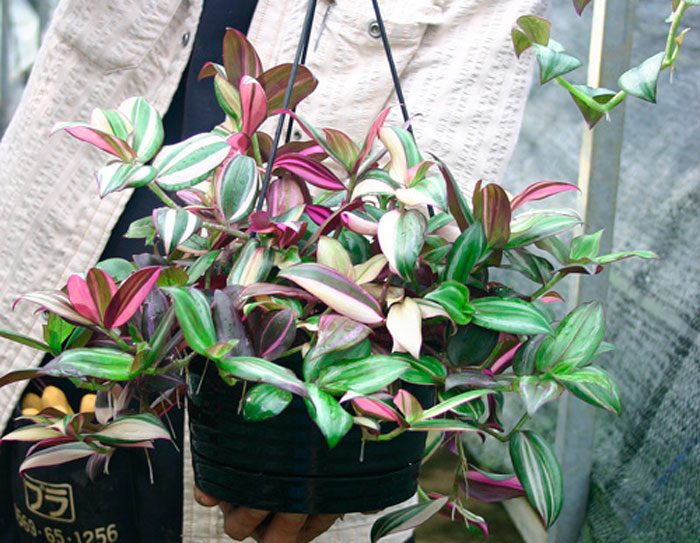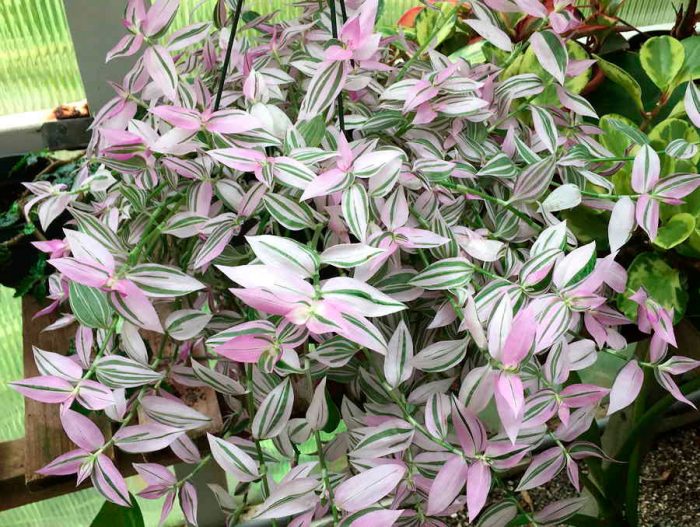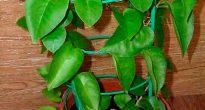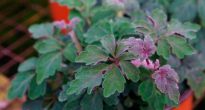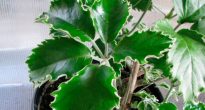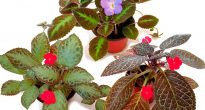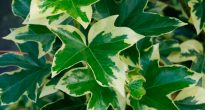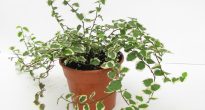The tradescantia plant is a member of the Commelin family. This genus unites about 30 species. In nature, such a plant is found in the tropical and temperate zones of America. The name "Tradescantia" comes from the name of the gardener John Tradescant, he served the English king Charles I and was the first to describe this genus. The people also call this herb "Woman's gossip", or "saxifrage".
Content
- 1 Features of tradescantia
- 2 Brief description of cultivation
- 3 Home care for tradescantia
- 4 Reproduction methods
- 5 Possible problems
- 6 Types and varieties of tradescantia with photos and names
- 6.1 Tradescantia Anderson (Tradescantia x andersoniana)
- 6.2 White-flowered Tradescantia (Tradescantia albiflora)
- 6.3 Tradescantia blossfeldiana
- 6.4 Virginia Tradescantia (Tradescantia virginiana)
- 6.5 Hairy Tradescantia (Tradescantia pilosa)
- 6.6 Tradescantia zebrina
- 6.7 Tradescantia navicularis
- 6.8 Tradescantia multicolor
- 6.9 Riverine Tradescantia (Tradescantia fluminensis)
Features of tradescantia
Tradescantia is a not very tall herbaceous perennial plant that has creeping or straight stems. Alternately located leaf plates can have different shapes, depending on the type, it can be elliptical, lanceolate or ovoid. The formation of inflorescences occurs from the axils of the apical leaf plates. Tradescantia is one of the most popular ampelous plants among flower growers. Thanks to regular pinching, the bush becomes lush and branched. Most often, a pot with such a flower is placed on a high shelf or in a hanging vase so that the long stems can hang freely. During flowering, blue or violet-blue flowers are formed on the bush. Tradescantia is also used to decorate aquariums. For this, the flower is placed in such a way that its stems are immersed in the water of the aquarium and form a green spectacular rug.
This plant also has medicinal properties. It helps to purify the air in the room, and is also able to neutralize electromagnetic radiation. The cut branches of this plant, placed in water, are able to stand there for several months, and sometimes for about a year. But for this, fertilizers must be regularly added to the water.
Brief description of cultivation
- Bloom... Tradescantia is grown as a decorative leafy plant.
- Illumination... Slight shading or bright, but always diffused light.Note that variegated varieties need more sunlight, but direct sunlight can harm them too.
- Temperature regime... In the spring and summer, the air temperature should be about 25 degrees, and in the cold season - no more than 12 degrees.
- Watering... During the growing season, watered abundantly and systematically, immediately after the top layer of soil mixture in the pot dries. During a cool wintering, watering is carried out only when the substrate in the container is completely dry, but if the flower hibernates in the warmth, then it should be watered immediately after the earthen lump has dried to ¼ of the depth.
- Air humidity... It grows well at a low level of air humidity typical for residential premises.
- Fertilizer... Top dressing is carried out only in the spring and summer period, regularly 1 time in half a month, while organic matter and mineral fertilizers are recommended to be used alternately. It is better not to feed variegated varieties with organic fertilizers.
- Dormant period... It is not pronounced.
- Pruning... In the springtime.
- Transfer... It is carried out together with pruning. Young bushes are transplanted every year, and adult specimens are transplanted once every 2 or 3 years.
- Soil mixture... If you wish, you can buy a ready-made soil mixture for tradescantia. But you can also do it yourself by combining sod, deciduous and humus soil, as well as sand in a ratio of 2: 4: 2: 1.
- Reproduction... Rhizome division, cuttings and seed method.
- Harmful insects... Thrips, scale insects and spider mites.
- Diseases... If the plant is improperly looked after or if it is not provided with comfortable conditions for growth, then the shoots may become bare, rot may appear, and this also leads to the foliage becoming faded, or specks appear on it, or its tips turn brown.
- Properties... Pale Tradescantia can irritate the skin.
Home care for tradescantia
Illumination
Best of all, Tradescantia will feel on the windowsill of an east or west orientation, while it must be borne in mind that bright light must be necessarily diffused. It can grow well on the northern windowsill. When grown on a south window at midday, the flower must be shaded.
Variegated forms are the most demanding on lighting. If they do not have enough light, then the color of the leaf plates will simply turn green, and in the case of excessively intense lighting, the foliage will fade. The most shade-loving species is white-flowered tradescantia. In the summertime, Tradescantia can be transferred to the garden or to the balcony, while choosing a place for it protected from drafts and direct sunlight.
Temperature regime
In summer, such a vine grows best at an air temperature of about 25 degrees. For wintering, it is best suited for coolness (no higher than 12 degrees), however, with good care, it will be able to winter well in warmth.
Watering
In the spring-summer period, water the bush systematically and abundantly, but make sure that there is no stagnation of liquid in the substrate. Soft water is used for irrigation, and it is carried out a couple of days after the top layer of the soil mixture dries out. In the cold season, watering is carried out three or four days after the top layer of the substrate has dried.
Always make sure that the water does not stagnate in the root system of the creeper, as this can cause the soil mixture to acidify. When half an hour has passed after watering, excess water is drained from the pan, and it is wiped with a dry cloth.
During cold wintering (12-16 degrees), watering the flower is carried out only when the earthen lump in the pot dries out completely. Tradescantia can do without watering for a long time, while it will greatly weaken, but this will not lead to its death.
Air humidity
It is not necessary to moisten the bush from a spray bottle, but regular spraying will still be beneficial to it in the summer.
Fertilizer
In the spring-summer period, you need to feed the flower systematically 1 time in 14 days. For this, it is recommended to alternately use organic matter and mineral fertilizers. However, when growing variegated forms, it is better to abandon the use of organic fertilizers, since because of them, the color of the foliage can simply turn green. With the onset of autumn, feeding is stopped, and they are resumed only in the spring.
Pruning
When grown at home, the culture is aging quite rapidly and loses its former beauty. For example, her shoots may be bare. In order to preserve the decorativeness of the vine for a long time, it is necessary to regularly pinch the stems, and also do a small pruning every year. Also, do not forget about transplanting the bush into a fresh substrate, which should be carried out in a timely manner.
Tradescantia transplant
As a rule, Tradescantia is transplanted on the day of pruning. Young plants need a more frequent transplant, which is carried out once a year, when they become adults, this procedure can be carried out less frequently (once every 2-3 years). Before planting, a good drainage layer must be made at the bottom of the container. For transplantation, a soil mixture of the following composition is used: 1 part of sod and humus soil, 2 parts of deciduous soil and half of a part of sand. If desired, for transplanting, you can use a ready-made commercial earthen mixture intended for Tradescantia.


Watch this video on YouTube
Virulence
After working with Pale Tradescantia, be sure to wash your hands, as it can cause irritation on the skin.
Reproduction methods
Growing from seeds
Sowing seeds of tradescantia is carried out in the first spring weeks, for this they use a soil mixture consisting of sand and peat. For crops, it is necessary to build a mini-greenhouse, inside which the air temperature must be maintained at 20 degrees. Crops must be provided with systematic ventilation and humidification from a spray bottle. If the plants grown from seeds are properly looked after, then their first flowering can be seen already in the third year of growth.
Cuttings
If you decide to propagate the vine by cuttings, then you can do this at any time of the year. To do this, you need to cut off the stem and cut it into pieces that reach a length of 10 to 15 centimeters. From 5 to 8 cuttings are planted in one pot, and it is filled with a substrate consisting of compost and humus soil, as well as sand (1: 1: 1). For better rooting, the temperature should be kept at 15 to 20 degrees. The segments take root very quickly, after only a few days they should grow roots. Within 6-8 weeks they will become spectacular bushes.
Reproduction by division
During transplantation, the bush can be propagated by dividing the rhizome.
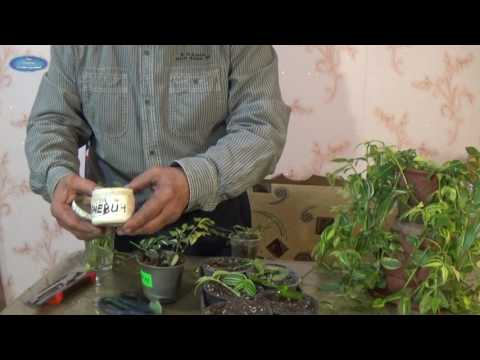

Watch this video on YouTube
Possible problems
- Tradescantia grows poorly... The shoots become elongated, and the amount of foliage is reduced due to a lack of water or nutrients, as well as due to poor lighting.
- Tradescantia leaves turn green... When growing variegated forms, you need to ensure that the flower has enough light, otherwise its foliage will turn green.
- Spots on leaf plates... If the plant does not have enough water, then because of this, its shoots will become lethargic, and yellow specks form on the surface of the leaf plates.
- The flower is pulled... During the winter period, the shoots of Tradescantia can stretch out, while at their base, foliage dries and flies around. In this case, rooted cuttings are used to rejuvenate the bush.
- Tradescantia leaves turn brown... If the air humidity is too low, the tips of the leaf plates may turn brown.
- Foliage becomes monochromatic... Stripes sometimes disappear on the leaf plates, and they become monochromatic.This happens due to too poor lighting, as well as if pruning or cuttings were carried out incorrectly.
Diseases and pests
Most often, such a flower is affected by rot. If he is on the street, then slugs and aphids can harm him.
Types and varieties of tradescantia with photos and names
Tradescantia Anderson (Tradescantia x andersoniana)
This plant is a hybrid with Virginia Tradescantia, it was created for cultivation in the open field. The varieties of this species have straight branchy shoots. Lanceolate leaf plates are violet-green in color. Flat-shaped flowers can be colored white, pink, blue or purple, they are collected in inflorescences, the shape of which is very similar to the umbrella-shaped. Varieties:
- Purewell giant - the color of the flowers is carmine red;
- Osprey - white inflorescences are decorated during flowering;
- Leonora - flowers are violet-blue;
- Iris - blooms luxuriantly with blue flowers;
- G. Weguelin - this variety has very large flowers, and they are painted in a sky blue hue.
White-flowered Tradescantia (Tradescantia albiflora)
Either Tradescantia tricolor or Tradescantia uiridis. This plant comes from the tropical part of South America. It has creeping stems. The bare, shiny leaf plates have an elongated ovoid shape, their width is about 25 mm, and their length is up to 60 mm. Their color can be silver-variegated or green. Most often, inflorescences form at the tops of the shoots, but sometimes grow from the leaf sinuses. Small flowers are white. Varieties:
- tricolor - on the foliage there are stripes of white or pinkish-lilac color;
- albovittata - the leaves are decorated with white stripes;
- aurea - this variety has yellow foliage with green stripes;
- aureovittata - the front surface of the leaf plates is decorated with golden-yellow longitudinal stripes.
Tradescantia blossfeldiana
In nature, the species is found in Argentina. In such a herbaceous perennial, creeping shoots are painted greenish-red. The shape of the alternate leaf plates is elliptical or lanceolate, they have a pointed apex and a tubular sheath. The width of the leaves is about 30 mm, and their length is up to 80 mm, their seamy surface is painted in purple, and the front - in dark green with a reddish tint. On the surface of foliage, leaf sheaths and shoots under the nodes there is pubescence, represented by white hairs. Long densely pubescent pedicels grow at the ends of the stems, as well as from the axils of the upper leaf plates. At the bottom of the inflorescence 2 bracts of different sizes grow. The flower contains 3 sepals and the same number of petals. There is dense pubescence on the surface of the purple sepals. The lower part of the stamens has pubescence, represented by long white hairs.
There is a variety variegata. It has similar patterns of wide yellow stripes on the adjacent right-hand and also on the adjacent left-hand plates. The patterns of the left and right leaves are different. With improper cuttings or pruning, and also due to poor lighting, the pattern on the foliage disappears.
Virginia Tradescantia (Tradescantia virginiana)
Originally from the southeast of North America. The length of the knotty, straight and branched shoot is about 0.6 m. The length of the lanceolate foliage is about 20 centimeters, the leaf sheath covers the shoot. The diameter of pinkish-purple flowers is up to 40 mm, they are collected in apical umbellate inflorescences, they include 2 large bracts and 3 petals. Blooming is observed in July – August. The fruit is a capsule with longitudinal valves. Varieties:
- atrorubra - color of inflorescences blood-red;
- coerulea - the flowers are blue;
- rosea - pink inflorescences;
- rubra - the bush is decorated with red flowers.
Hairy Tradescantia (Tradescantia pilosa)
Straight shoots are decorated with long leaf plates, on the surface of which there is pubescence of white hairs. The color of the flowers is lilac-pink.
Tradescantia zebrina
Or hanging tradescantia (Tradescantia pendula). Red bare stems can be creeping or drooping. Ovate foliage is about 50 mm wide and up to 100 mm long. On the front surface, a pair of stripes of a silvery-white color runs along the entire leaf plate, and their lower surface is red. Small flowers are colored purple or violet.
Such a succulent plant is found naturally in Mexico and Peru. There is no pubescence on the creeping stems. Boat-shaped small ovoid leaf plates are about 10 mm wide and up to 40 mm long. Thick foliage, pointed from above, keeled from below, has cilia along the edge, and on the surface there are many purple dots. The formation of inflorescences is observed at the top of the bush, they consist of pink flowers.
Tradescantia multicolor
Shoots are densely leafy in small green leafy plates, on the surface of which there are stripes of white or pink color. Such a plant is considered highly decorative.
Riverine Tradescantia (Tradescantia fluminensis)
The homeland of this plant is Brazil. On the surface of the creeping purple-red stems there are many green specks. The shape of short petiolate smooth leaves is ovoid, their width is up to 20 mm, and their length is about 25 mm. Varieties:
- variegata - there are cream-colored stripes on the foliage;
- Quicksilver - the leaves are decorated with white stripes.


Watch this video on YouTube

